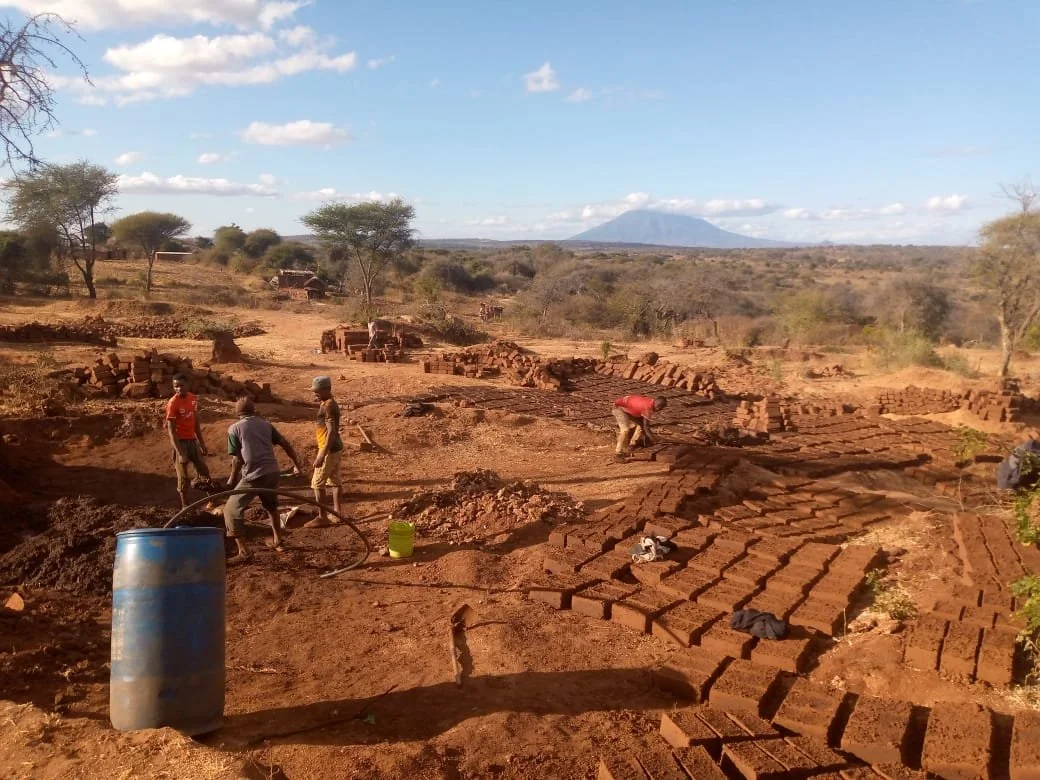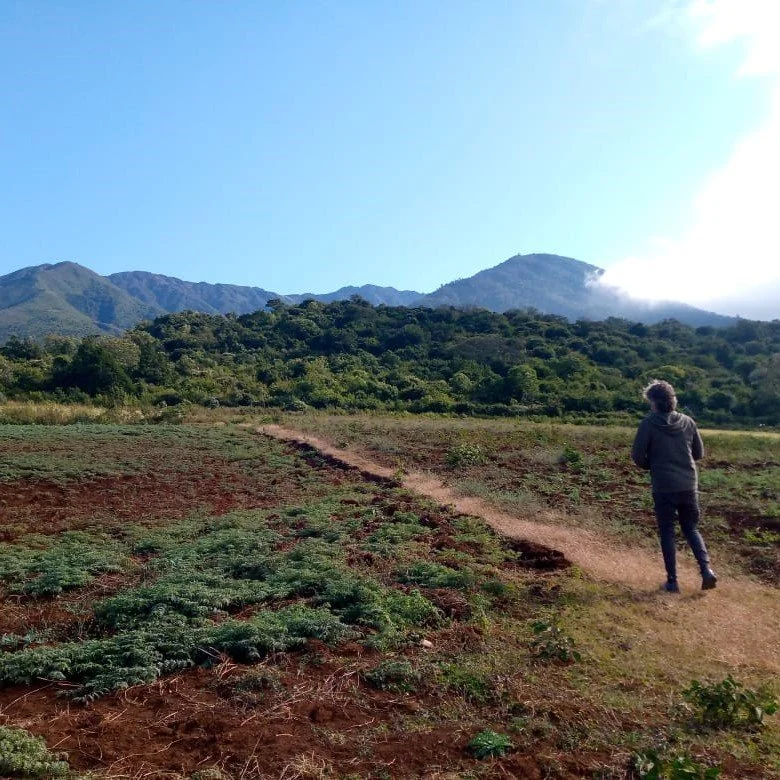Visiting the Barabaig People
In order to experience the reality of life in the village for an average Barabaig tribesman in the Hanang region of Tanzania, Christopher, Moses and Aiden from the African Slabs team trekked from Arusha through the corridor between Lake Manyara and Tarangire National Parks to Lake Balangda Lelu. On the top of a hill just past the town of Katesh, we turned into a small village named Gehandu where we checked in on the progress of a few local home building projects. Accompanied by a troop of curious children, we explored the area searching for high vantage points and eventually came upon a prime spot. From atop an outcropping of rocks, we marveled at the superbly wild view of Lake Balangda below us. I remarked with gusto that I wouldn't mind living in this very spot.
On the way back to town from the village, we made an unexpected detour to visit an old friend of Christopher. His home was made in the traditional Barabaig fashion with cow dung mud walls and a thatch roof. Just outside the door was a fire pit with makeshift billows for keeping flames hot enough for smelting. It turns out that this man was an impressive blacksmith who fashions traditional jewelry and spearheads from scrap metals. We took a few souvenirs for the road and bid him farewell. Closeby in the same area we stopped for some coffee and had the chance to speak with a few local craftsmen. I was thoroughly impressed by the way one man was able to fashion some car parts by hand from rubber. All across Africa there is no limit to people's creativity when it comes to creating and fixing things.
Our survey of the lake Balangda area illuminated the beauty and reality of life for the local people. The day began when we pulled into town to meet with an old friend who introduced us to a group of local government officials. With a full car, we drove to a humble government office where we had the opportunity to explain a somewhat revolutionary school idea. All of the decision makers in the room seemed to be pleased with our concept of creating an educational institution that truly serves the community by preserving cultural knowledge while providing greater opportunity for advancement. We shook a few hands and continued our exploration of the area to determine a suitable location for the project. The first stop was a gorgeous natural spring well that was partially flooded by waters from Lake Balangda at this time of year. A few school age boys were enjoying the lukewarm waters and I imagined how long ago people first started bathing here. Resisting the urge to jump in myself, we took a water sample to test for alkalinity and continued on our way. A few more kilometers down the road, we happened upon an old wind turbine that had once been used for pumping underground water for irrigation. We spoke with the family who operated the well and learned that the turbine had fallen into disuse because of the cost needed to maintain it. For now, the collected water is the home of a few fish, but next year plans are being made to get it up and running once again.





